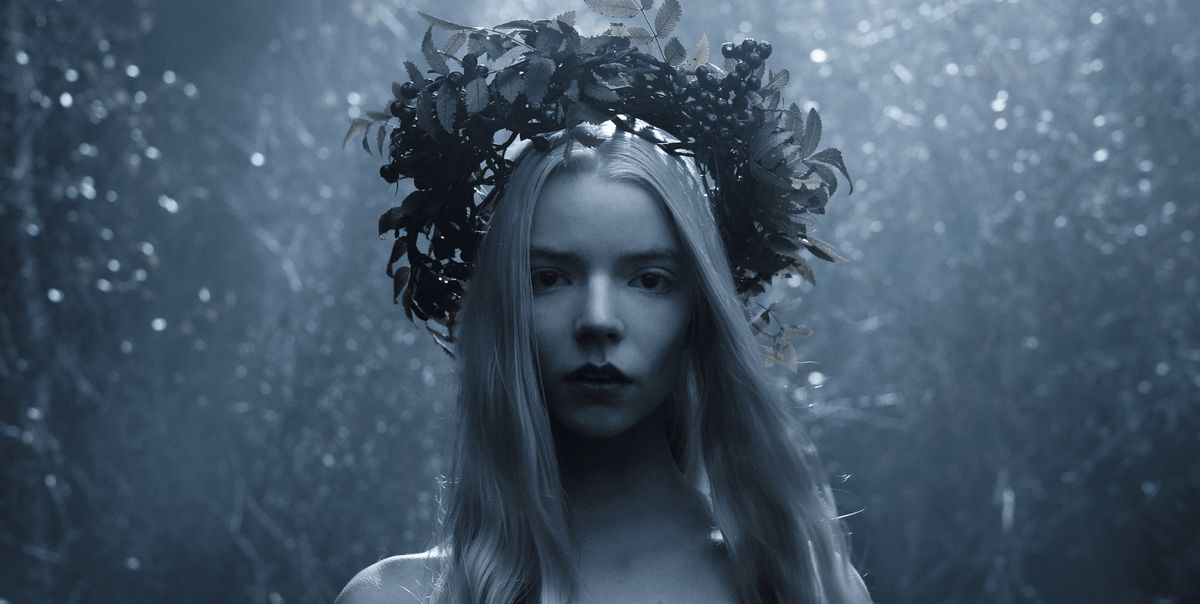
Olga of the Birch Forest
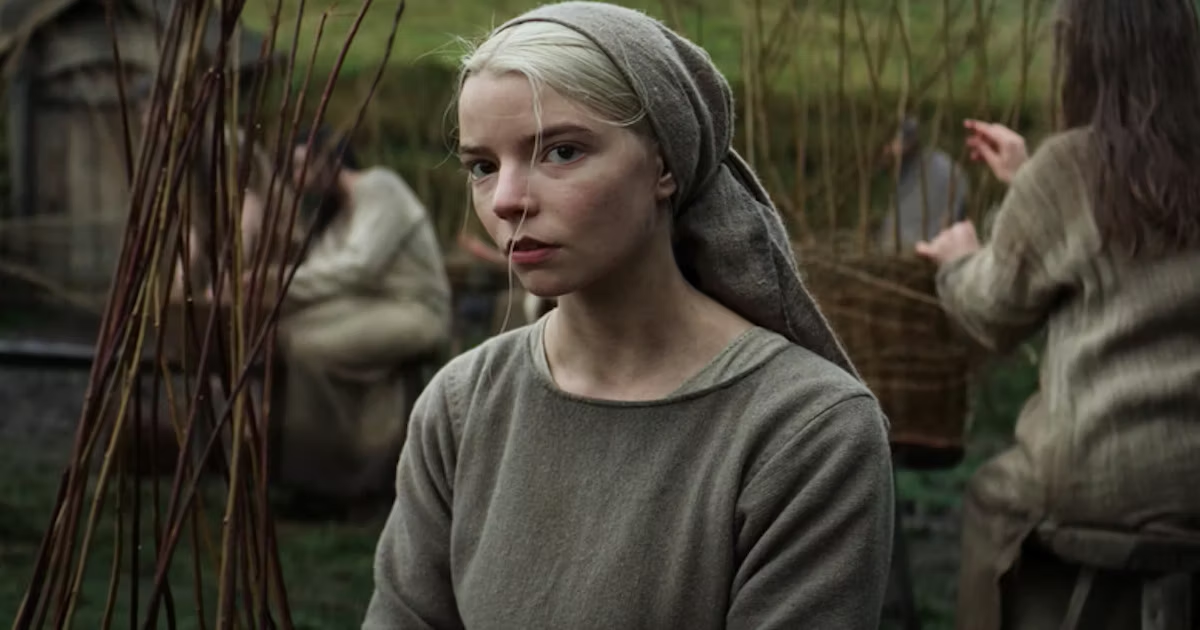
Olga is a somewhat lower-class inhabitant of a small village set in modern-day Ukraine. In the first part of the movie, she wears simple yet elegantly decorated clothing. The dress she’s wearing in the picture below is called a rubakha, and is used to signify marital status. Unmarried women wear a rubakha under a rectangular overgarment called a zapona (which Olga is wearing), while married women wear their rubakha under a shirt-like overgarment called a navershnik (La Rus and Kies 2001, 3).
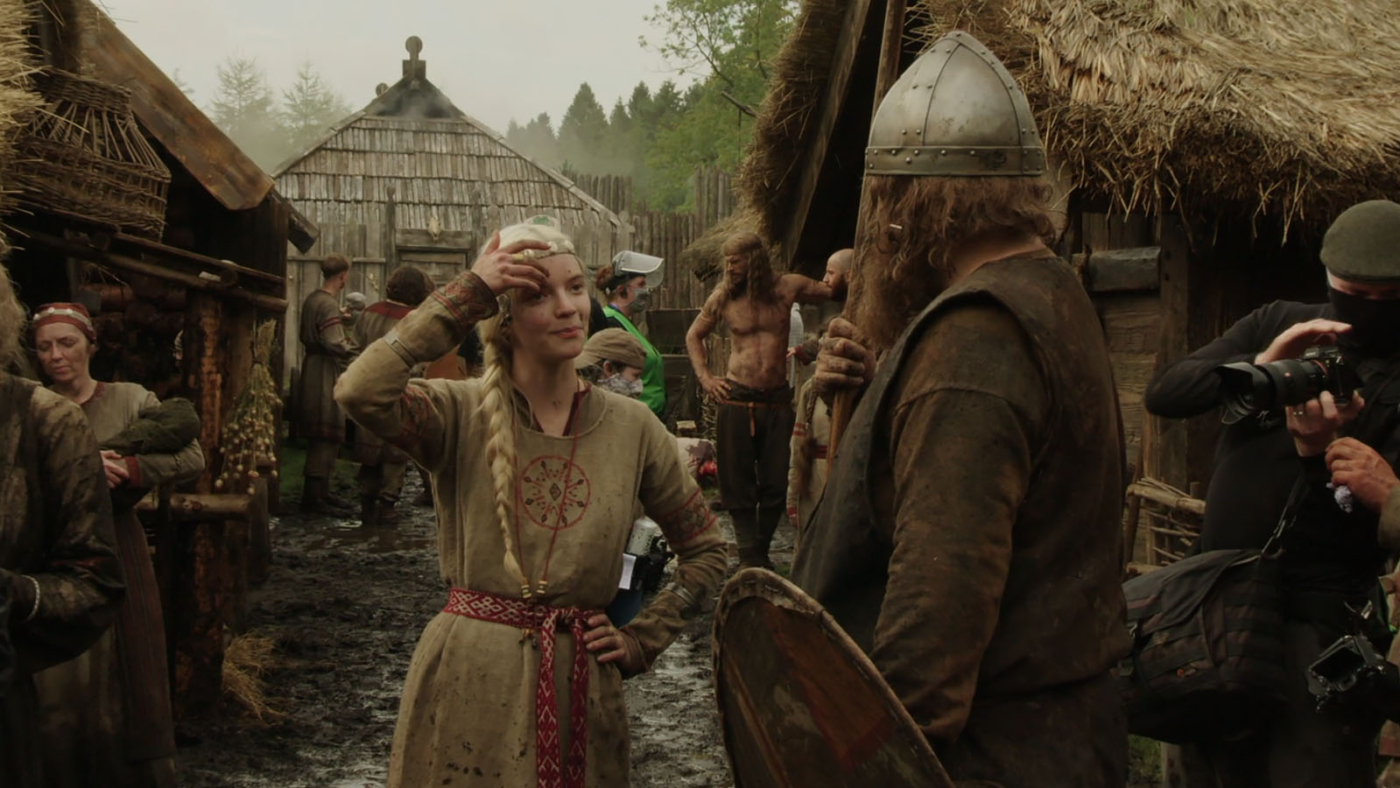
Before she’s enslaved, Olga’s dress is a dark tan, signifying that she doesn’t have the money or resources to bleach or dye it. The dress is belted, which comes from an ancient pagan belief that belts could protect the wearer from evil spirits. “It was believed that unclean forces could not penetrate openings protected by lacy, embroidered belts.” (La Rus & Kies 2001, 3). Also, Olga has her hair in one single braid, whereas married women would wear two braids (Chopyk 1986, 116).
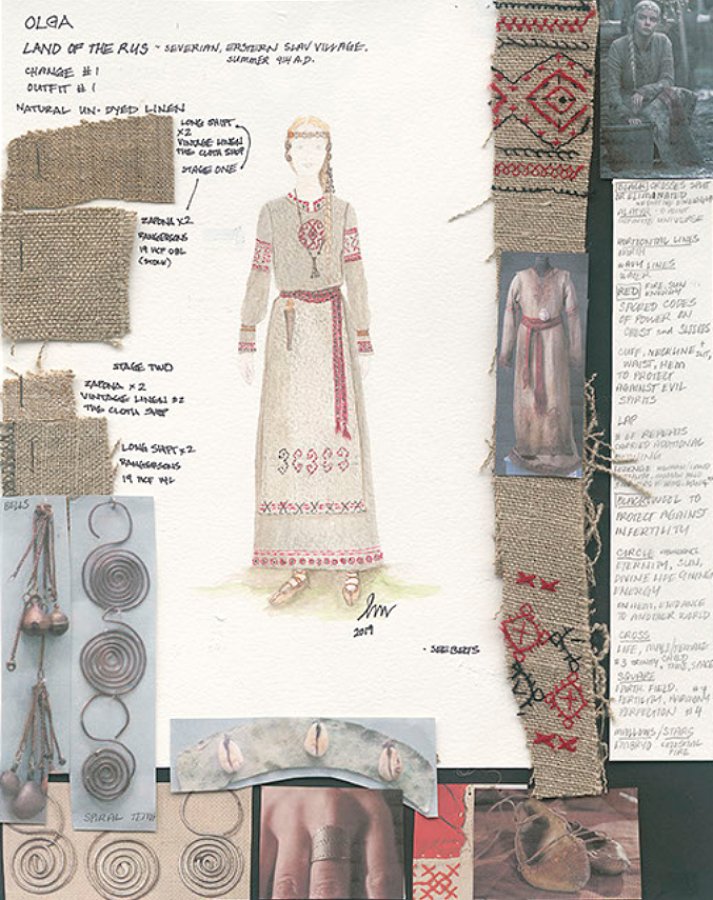
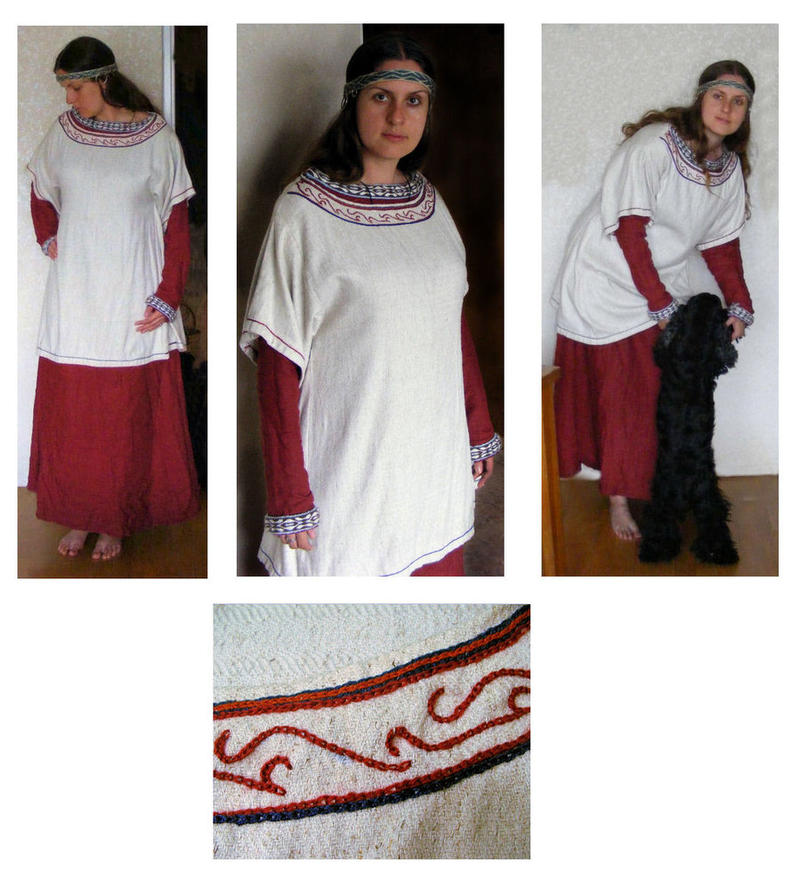
The embroidery on Olga’s dress has specific meanings, linking her to her village. Costume designer Linda Muir explains “Women’s clothing was embroidered at the wrist, hem, and neckline with different motifs which all had different meanings. The word for embroidery at the time was the same for writing. They were writing on their clothing their wishes for their family and for themselves—be it prosperity, children, health, good crops, etc.” (Muir 2022). Olga also wears a headband with rings at the temples, like the Seeress, which expresses her cultural identity.
References
Chopyk, Dan B. 1986. “THE MAGIC OF A CIRCLE: Ceremonial Attire, Food, and Dance Symbolism in Slavic Weddings.” Russian Language Journal / Русский Язык 40, no. 135: 115–20. http://www.jstor.org/stable/43668961.
La Rus, Sophia and Kies, Mka Lisa. 2001. "Women’s Clothing in Kievan Rus." Academia.edu. http://www.academia.edu/8921162/Kievan_Rus_womens_clothing.
Maadob. 2007. “Navershnik” Deviantart. https://www.deviantart.com/slavya/art/Navershnik-by-Maadob-61194700
Muir, Linda. 2022. “Nicole Kidman’s Viking Chic and More: Dressing The Northman” Focus Features. https://www.focusfeatures.com/article/interview_costume-designer_linda-muir.